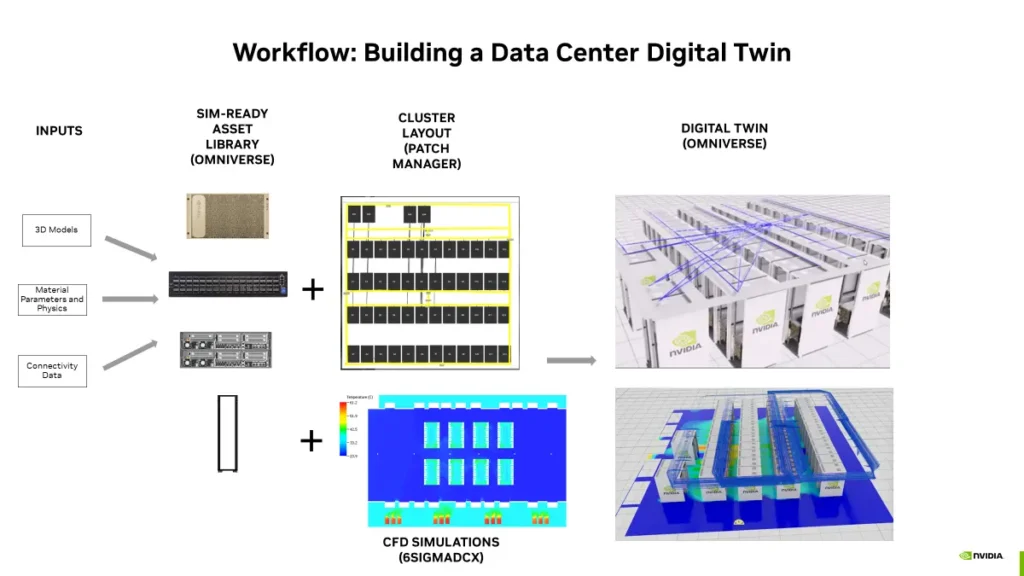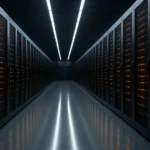Imagine a world where your data center’s energy use is as efficient as a well-oiled machine. No guesswork. No overcompensation. Just precise, data-driven decisions that cut costs and shrink your carbon footprint. Sounds too good to be true? That’s when digital twins come into play—virtual clones of your physical infrastructure that simulate real-world scenarios to optimize energy use. And here’s the kicker: pairing them with circular IT solutions could be the 1-2 punch your business needs to save money while reducing environmental impact.
what are digital twins, anyway?
We are not talking about the NFT version of the Olsen sisters here: a digital twin is a 3D virtual model of your data center that mirrors its real-time conditions. It’s like having a crystal ball that shows how cooling systems, power distribution, and server performance interact—before you make physical changes. This isn’t just for tech wizards; even small businesses can use digital twins to test scenarios like deploying new AI workloads or upgrading cooling systems. For example, a study conducted at the University of Liverpool showed digital twins reduced energy consumption by 23% and saved them £25,000 in operational costs.
why energy efficiency matters (more than ever)?
AI and high-density servers are revolutionizing industries, but they’re also energy hogs. A single AI query like ChatGPT guzzles 10x more energy than a standard Google search2. Traditional cooling systems struggle to keep up, forcing operators to overcompensate with ones that consume more energy—thus raising the costs and increasing its environmental impact. Digital twins step in by simulating how changes (like cooling upgrades or workload redistribution) affect energy use before they’re implemented. The result? Significant savings in both server and cooling energy use.
how to get started?
The first step is gathering detailed information about your physical infrastructure, including asset lists, CAD models, and environmental data such as temperature and airflow.
Next, this data is fed into specialized software platforms (such as NVIDIA Omniverse or Cadence Reality DC), creating a precise virtual replica of your data center.

Source : Data Center Digital Twins (NVIDIA Omniverse)
Once the initial model is built, calibration begins: real-time sensor data from your facility is integrated to ensure the virtual twin accurately reflects real-world conditions. This synchronization enables you to simulate scenarios—such as adding new servers or upgrading cooling systems—and instantly see their impact on energy consumption and performance without risking downtime or costly errors. Over time, continuous monitoring and updates ensures that your digital twin remains accurate and actionable, helping you proactively identify inefficiencies and opportunities for improvement.
Digital twins software can also be integrated with existing tools and systems you already use in your facility, such as data center infrastructure management (DCIM) and configuration management database (CMDB)
going one step further with circular IT
Here’s where we come in. While digital twins optimize energy use, circular IT solutions ensure your hardware itself is eco-friendly and cost-effective. Instead of buying new, expensive gear, businesses can adopt circular equipment. This approach slashes e-waste (currently 61.3 million tonnes annually) and cuts costs by up to 80% while maintaining top performance.
How does this tie into digital twins? Think of it as a symbiotic relationship:
• Refurbished hardware from circular programs extends asset lifespans, reducing the need for frequent replacements.
• Digital twins ensure this hardware operates at peak efficiency, avoiding energy waste.
• Predictive analytics from twins identify when components might fail, allowing for proactive refurbishment or upgrades.
real-world wins
1. energy savings: The study by IES and the University of Liverpool, which we mentioned earlier, proved that digital twins can cut energy use by nearly a quarter. Pair this with circular hardware and savings will compound.
2. cooling efficiency: Digital twins test cooling solutions (like direct liquid cooling) virtually, avoiding costly trial-and-error.
3. cost reduction: Refurbished servers cost up to 80% less than new ones (with similar configurations), including warranties and support matching top-tier vendors.
the bigger picture: why this matters
We only have one planet, and regulations like the EU’s Energy Efficiency Directive (EED) are tightening, prompting businesses to report and reduce their energy use. Digital twins and circular IT aren’t just “nice-to-haves”—they’re strategic tools for staying compliant while saving money. Additionaly, consumers increasingly favor eco-conscious brands. By adopting these solutions, businesses not only cut costs but also build a greener reputation.
conclusion
Digital twins provide a game-changing approach to optimize energy efficiency, allowing businesses to make data-driven decisions that cut costs and carbon emissions before changes are even implemented. But true sustainability goes beyond software alone. Pairing digital twin technology with circular IT practices—extending hardware lifecycles, reducing e-waste, and embracing circular equipment—creates a powerful synergy that benefits both the bottom line and the planet.
As regulations tighten and energy costs rise, businesses that embrace these solutions will gain a critical advantage: lower operational expenses, a reduced environmental footprint, and a stronger reputation in a market that increasingly values sustainability. The tools are here, the expertise is available. Get in touch with us if you have any questions!


